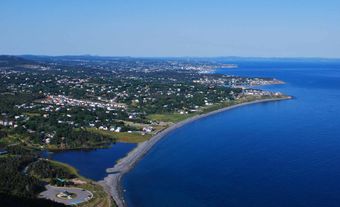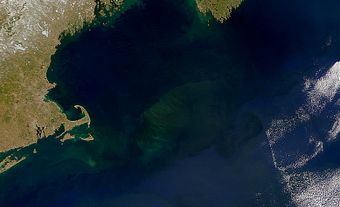French Shore
The French Shore was an area of coastal Newfoundland where French fishermen enjoyed treaty rights granted by the British from 1713 to 1904. Anglo-French rivalry in Newfoundland began in the 1500s, intensified in the 1600s over the establishment of fishing stations and colonies, and was ultimately decided by European wars. In 1713 the Treaty of Utrecht recognized British sovereignty over all French colonies and fishing territories in Newfoundland, except for the right to use for fishing, but not settlement, the coast westward from Cape Bonavista, around Bonavista Bay, Notre Dame Bay, White Bay and the Great Northern Peninsula, south to Point Riche, near Port au Choix. In peace negotiations between Britain and France 1713-1814 the French Shore was usually an issue. The Treaty of Paris, 1763 confirmed the 1713 boundaries but ceded Saint-Pierre and Miquelon to France. The Treaty of Versailles, 1783 altered the French Shore boundaries to the coast between Cape St John on the west side of Notre Dame Bay, around the Great Northern Peninsula, and southward along the entire west coast of Newfoundland to Cape Ray, northwest of Channel-Port aux Basques. These terms were confirmed by the 1814 Treaty of Paris.
Between 1815 and 1904 the French Shore ceased to be a wholly Anglo-French issue as Newfoundland gained representative (1832) and responsible (1855) government and began to challenge France's claim to exclusive use of the shore. Settlement radiated west in the 1800s and the colony pressed its claims to a concurrent fishery. Despite numerous conventions and commissions, it was not until the Anglo-French Convention of 1904 that France ceded all fishing rights, except for an equal summer fishery and the islands of Saint-Pierre and Miquelon. Though the French Shore disappeared, its influence is still felt in some areas, in the language, music and folk culture as well as in modern place-names.

 Share on Facebook
Share on Facebook Share on X
Share on X Share by Email
Share by Email Share on Google Classroom
Share on Google Classroom


